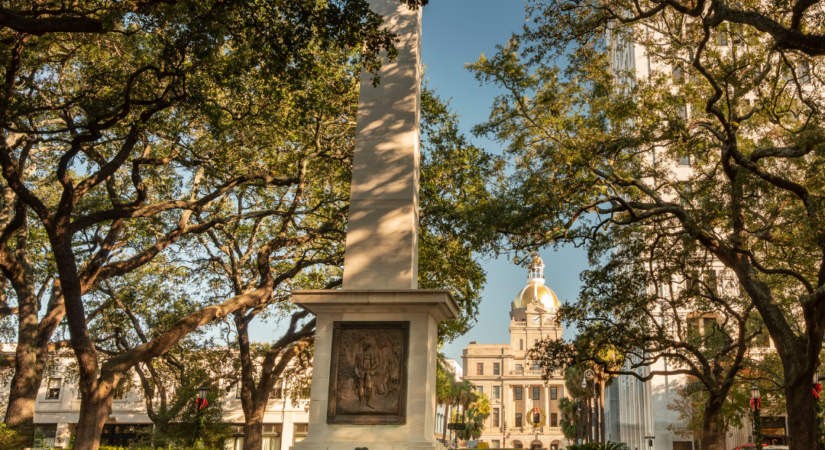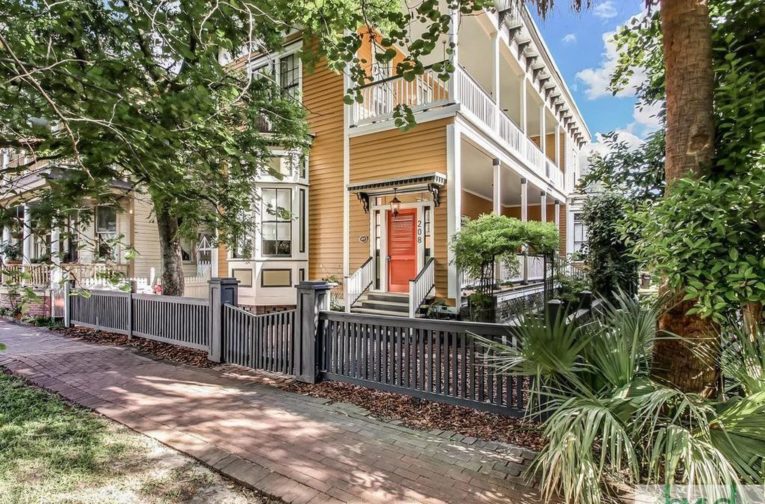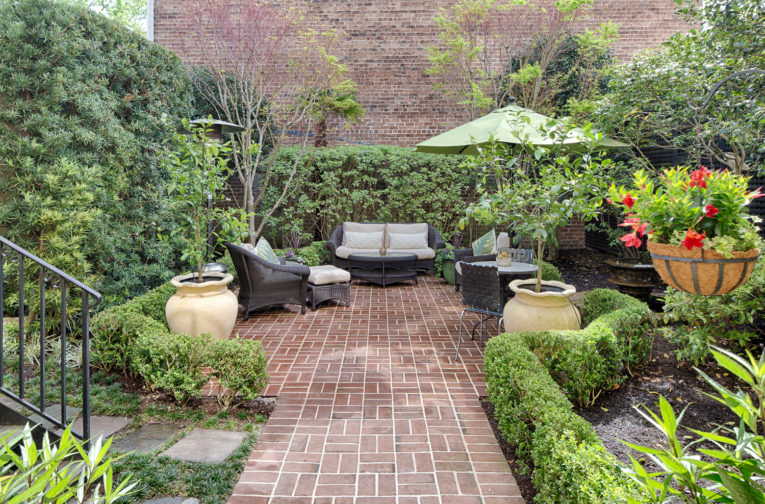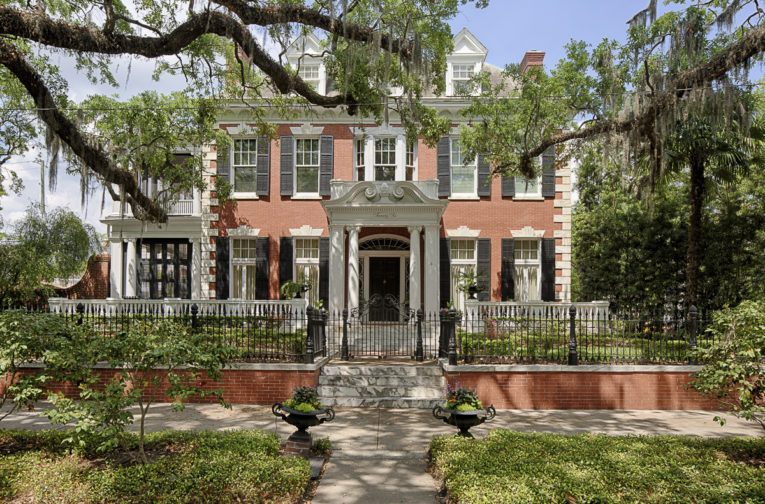Savannah’s first and largest square has played an important role in local life for nearly three centuries and over the course of many generations.
Laid out immediately after Savannah’s founding in 1733 by Gen. James Oglethorpe, the square is named for Robert Johnson, then-governor of South Carolina, who aided the efforts of the first Georgia colonists. The iconic obelisk in the center of Johnson Square may look familiar, since it is indeed modeled after the famous Cleopatra’s Needle. Honoring Revolutionary War hero Nathanael Greene, its cornerstone was laid by another hero of the Revolution, Marquis De Lafayette, visiting Savannah on his “farewell tour” of America in 1825.
While Johnson Square was the first of the city’s “monumental squares” running north-south on Bull Street, for well over a century it was the only square with a monument. As late as 1837, the other Bull Street squares had water pumps at their centers.
Epicenter of Civic Life
Johnson Square’s chief claim to fame through most of Savannah’s history has been as a center of civic and political life. It remains a longstanding tradition for candidates for local elected positions to announce their bids for office in Johnson Square. Today, the square hosts the daily hustle and bustle of downtown workers, City Hall officials, bankers and visitors. With its mature canopy of live oaks and strategic location as the northernmost square on Bull Street, Johnson Square serves as one of Savannah’s crown jewels, delighting local residents and visitors throughout the year.
In 1776, the Declaration of Independence was read aloud in Johnson Square to a rapt and enthusiastic crowd of liberty-lovers. When President James Monroe visited Savannah in 1819, famed architect William Jay designed a special wooden pavilion festooned with the Stars and Stripes for a grand outdoor ball held in Johnson Square.
The presence of the banking and financial industry in Johnson Square is impossible to miss. Most of the buildings overlooking the square are involved in the banking sector, including Savannah’s tallest “skyscraper” – the 15-story Savannah Bank and Trust Building on East Bryan Street, finished in 1911. Other grand financial facades on the square include the Citizens and Southern National Bank building at 22 Bull St., built in 1907, and the Chatham Bank at 27 Bull St., built in 1912.
Mother Church of Georgia
Christ Church, the stunning Greek Revival building anchoring Johnson Square’s southeast corner, is widely known as the “Mother Church of Georgia” and was the first congregation in Georgia as well as Savannah’s original parish church.
The house of worship that overlooks Johnson Square today, completed in 1840, is not the original one at the site. Christ Church’s first permanent building, made of wood, was completed in 1750 and burned down in 1796. President George Washington attended services there in 1791. Its replacement was destroyed mid-construction by a hurricane, and yet another replacement was demolished in order to build the current structure.
John Wesley, who would later go on to found Methodism, became Christ Church’s minister in 1736 at the invitation of Savannah founder Gen. James Oglethorpe. At Christ Church, Wesley began the first Sunday School ever held in America and published the first English-language hymnal used in the British colonies.
Today, homes, condominiums and lofts located near Johnson Square offer the ultimate urban lifestyle, offering easy access to the best that downtown Savannah has to offer. Whether you’re interested in buying or selling a historic property, it’s important to work with a knowledgeable, experienced real estate professional with a strong understanding of Savannah’s National Historic Landmark District.






